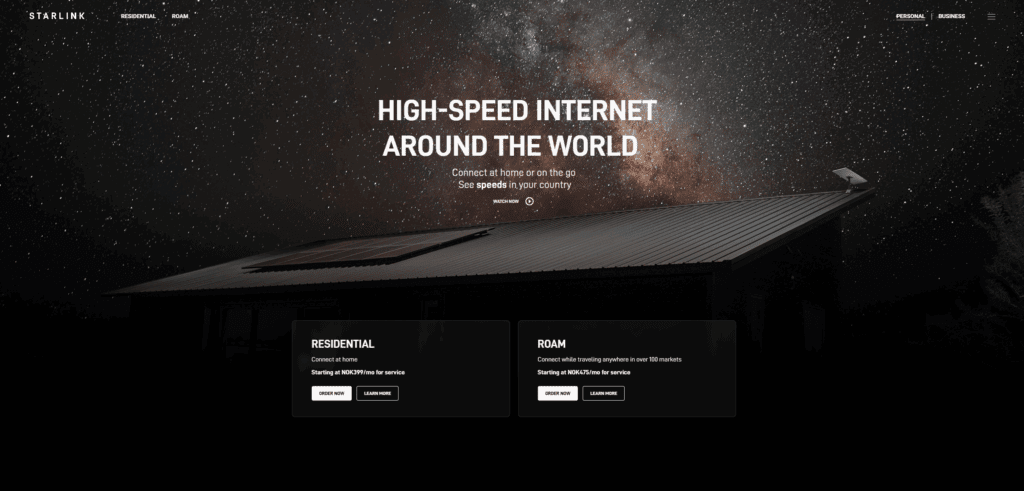Imagine asking someone, “Where are you right now?” In a world of phones, you might expect a crisp answer — city, country, even street. But on the Internet, that same question is surprisingly slippery. For decades, systems built for wireline telephony baked in geography. A telephone numbering plan could, in effect, reveal where in a country someone was calling from. But the Internet never worked that way.
Over time, though, we invented IP geolocation: databases that associate IP address ranges with places. Those systems are widely used for fraud prevention, content licensing, analytics, and more. In recent years, one development has begun to seriously challenge that model: the rise of satellite Internet — especially Starlink.

In this article, I walk you through the roots of IP geolocation, how Starlink breaks conventional assumptions, real-world anomalies we’re seeing today, and what this means for the future of mapping the Internet to places.
From telephone to IP: geography lost its anchor
- In old telephone systems, you dial a country code and area code; from that you know where the call originates.
- The Internet, by contrast, treats IP addresses as abstract resources. They don’t encode longitude or latitude.
From early days, network operators and researchers built geolocation databases (e.g. MaxMind, IPinfo, digital element) that combine public registry data, routing information, DNS, ISP reports, and crowdsourced data to map IPs to cities or countries.
But those mappings are heuristic, probabilistic, and imperfect.
What these databases rely on
- Registry data: the issuing authority (RIR) often records the country of the registrant, not necessarily where the addresses are used.
- Routing / BGP analysis: seeing where address blocks are announced, and via which networks.
- Supplemental “ground truth” data: from users, services, corporate networks confirming location.
- Geofeeds, published updates by operators: some networks publish their own IP→location feeds for accuracy.
Over time, geolocation became essential for things like regional ad targeting, fraud detection (e.g. “account access from unexpected country”), rights enforcement (e.g. streaming rights by country) and aggregate statistics (how many users in country X). But the methods always carried uncertainty.
The trouble with mobility, NAT, and VPNs
Even before satellites, IP geolocation was being stressed. Mobile users roam across regions, VPNs mask IP location, and many ISPs use CG-NAT or shared IPs. These already forced geolocation systems to be probabilistic. The expectation was never perfect precision, but “close enough” at the national or regional level.
Why Starlink Changes Everything

Starlink, operated by SpaceX, is a low Earth orbit (LEO) satellite network promising global (or near-global) Internet coverage. As of late 2024 / early 2025, researchers sampled millions of IPv6 addresses across more than 100 countries and mapped the Starlink backbone PoPs (points of presence) and interconnections.
When Starlink behaves like a standard ISP inside one country, geolocation systems can more or less cope. But it also enables global roaming, maritime/airborne connections, and cross-border usage — and that is where the assumptions break down.
Here’s how:
- IPs don’t necessarily reflect where the user is
A user on a ship in the Red Sea might be assigned an IP block that (in databases) maps to Yemen, because that is where Starlink’s geolocation feed places that subnet. - Ground station / egress points dominate geolocation mapping
Traffic from a Starlink user often exits via a satellite ground station (“PoP”). Geolocation systems may map the IP to the location of that ground station or its assigned region—not the user’s real position. - Roaming and cross-border registration
Because Starlink is global, users sometimes register service via an approved country but physically operate in a different country. Also, resellers may ship hardware across borders, so geolocation assigns the service to one place while usage occurs elsewhere. - Moving users (ships, planes)
Unlike a fixed home user, a satellite user on a vessel or aircraft is physically moving — yet their IP remains (for periods) tied to a static mapping. - Operator geofeed errors or simplifications
Starlink publishes a self-published “IP geolocation feed” (geoip.starlinkisp.net) that geolocation providers ingest. But that feed may assign addresses broadly or simplistically, without precise local detail.
In sum, many of the underlying assumptions that geolocation systems depend on are violated when a satellite ISP spans continents and supports mobile users.
To make this more concrete, here are examples where things go off the rails.
Yemen: 6 million Starlink users?
In one APNIC Labs data set from September 2025, Starlink (ASN AS14593) was credited with over 6 million users in Yemen — about 59% of Yemen’s estimated Internet user base. That is clearly implausible given Yemen’s population and infrastructure. The anomaly appears to stem from combining ad impression data with geolocation mappings that assign many Starlink IPs to Yemen — even when the underlying traffic originates from ships or from nearby countries’ users.
The result is that Starlink skews the measured ISP market share badly.
Other small nations with extreme percentages
APNIC flagged over 20 cases where Starlink was assigned more than 10% of ad placements in a country. Examples include Tuvalu (≈ 92 %), Kiribati (≈ 81 %), Cook Islands, Nauru, Pitcairn. In many of those, it’s unlikely the domestic population alone could support that level of Starlink usage, suggesting that maritime or roaming traffic is being attributed as domestic.
Streaming and content geoblocking problems
Users often report that their Starlink IP appears to be in a different region or state. For example, a customer in Florida saw their IP resolved to Atlanta, which messed up local TV channel access. Another reported Starlink’s geolocation feed saying, “Your internet geolocation may be several states or sub-regions away from your actual location.”
Across forums, people complain that Starlink’s geolocation causes issues with streaming services that enforce regional restrictions, or services deciding which local content to show.
IPv6 measurements: mapping PoPs
A large-scale measurement of Starlink’s IPv6 ecosystem found 33 PoPs and 70 interconnections, across 102 countries, using active probing of 3.2 million user routers. That suggests a distributed egress (exit) network consistent with global coverage. Such a distributed architecture complicates the assignment of an IP to a particular jurisdiction or country.
What Does This Mean for You (or Anyone Mapping Internet to Place)?
IP geolocation has long been an imperfect art. But satellite ISPs like Starlink expose just how brittle the assumptions can be when your “ISP” spans continents and serves mobile use over sea and air.
- Don’t trust IP = location blindly – If you build analytics, compliance checks, or content licensing strategies that assume you can map every user IP to a precise country or city, you’ll end up with distortion — especially once satellite ISPs grow.
- Be wary of satellite ISPs as ISPs – When satellite networks act as retail ISPs (not just wholesale to local providers), they bring in complexity. The logic of mapping IP blocks to fixed territories becomes much weaker.
- Consider classifying “unclassified” / “roaming / offshore” zones – Some researchers (like APNIC Labs) have already begun rejecting or marking as “unclassified” Starlink IPs in certain suspect countries to avoid skewing national statistics. In other words, treat satellite-derived locations as ambiguous in some contexts.
- Use multiple sources and validation – When possible, combine IP-to-location data with user-supplied geolocation (GPS from device, user profile), browser geolocation APIs, or opt-in location checks to validate.
- Monitor geofeed and update databases – Geolocation providers regularly ingest operator-published feeds (like Starlink’s) to improve mapping. Keeping your databases current reduces some errors.
- Recognize legal / policy ambiguity – What should it mean to be “in” a country when the user is on a plane or ship? Should geolocation reflect the satellite operator’s home, the ground station, or the flag state of a vessel? There’s no universally accepted answer.
If you’re building systems or analyses that depend on knowing “where the user is,” it’s time to rethink your assumptions. A prudent approach is to treat satellite-derived geolocation as less reliable, to allow “unknown / roaming” categories, and to combine multiple signals (device, user input, positioning) rather than rely solely on IP.










